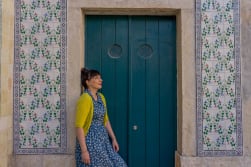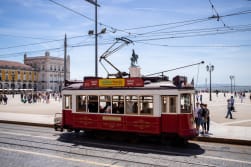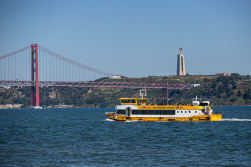A Guide to Lisbon's Underground Art Gallery: The Metro Stations
Lisbon isn't just about its surface beauty—beneath the city lies a treasure trove of art, hidden in plain sight. The Lisbon Metro is more than just an efficient and fast transportation system: its stations form a true underground art gallery, featuring works by renowned artists, making it a cultural experience accessible with the simple purchase of a metro ticket.
Each station has its own distinct personality, expressed through murals, tiles, and sculptures. This guide invites you to embark on a unique journey, where each stop reveals a masterpiece, showcasing the best of both Portuguese and international artistic talent.
Cidade Universitária Station – Science and Art in Harmony
At Cidade Universitária Station, art takes on an intellectual dimension. Designed by Artur Rosa, the station pays homage to science and knowledge, fitting for its location at the heart of Lisbon’s university campus. The walls are decorated with murals representing scientific and academic themes, in a palette of soft colors that bring a sense of tranquility. The large-scale geometric figures offer a visually stimulating experience.
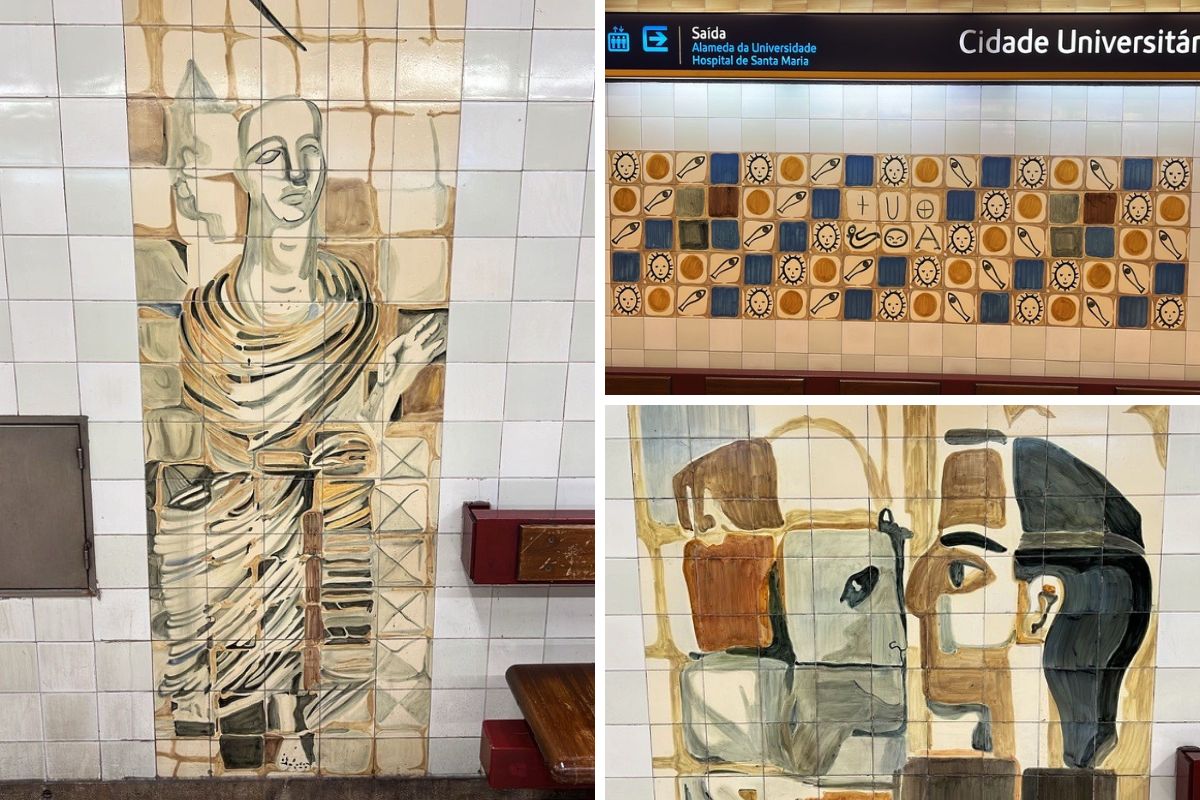
Oriente Station – A Fusion of Modern Art and Architecture
Part of the complex designed for Expo 98, Oriente Station exemplifies the fusion of art and architecture. Architect Santiago Calatrava designed this station as part of the Oriente train station, one of Lisbon’s main gateways. Its organic metal and glass structures contrast with the traditional tiles by António Ségui, creating a dialogue between the old and the new. The extensive use of natural light transforms this station into a true piece of modern architecture, where functionality and artistry coexist.
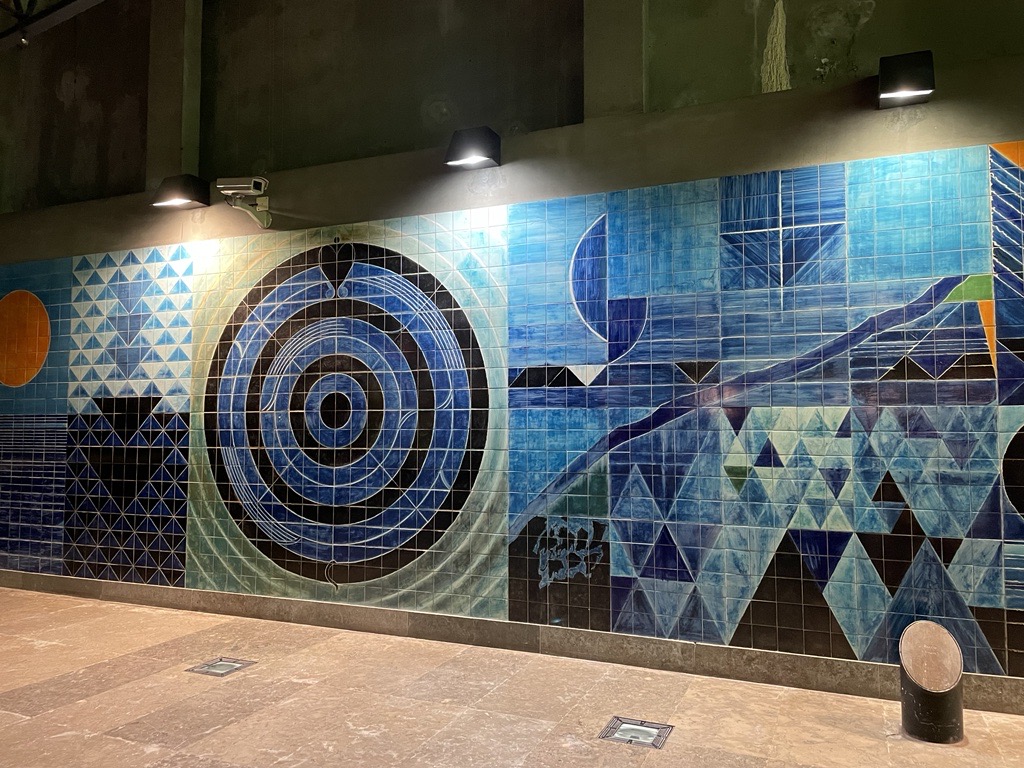
Saldanha Station – Modern Art and Architecture
The renovated Saldanha Station was designed by architect Sanchez Jorge, who created a modern and minimalist space. Here, art appears in subtle details, with sculptures and installations that line the long corridors and clean lines of the architecture. This space is a tribute to modernity, with contemporary artistic interventions that blend harmoniously into the station's design. Additionally, various quotes adorn the walls, offering poetic and intellectual reflection to those who pass through, further enriching the experience for travelers.
Not far away, the equally remarkable Picoas Station has an entrance decorated in Art Nouveau style, a gift from the Paris Metro, which adds a unique historical and artistic touch to the place, reinforcing the cultural connection between Lisbon and Paris.
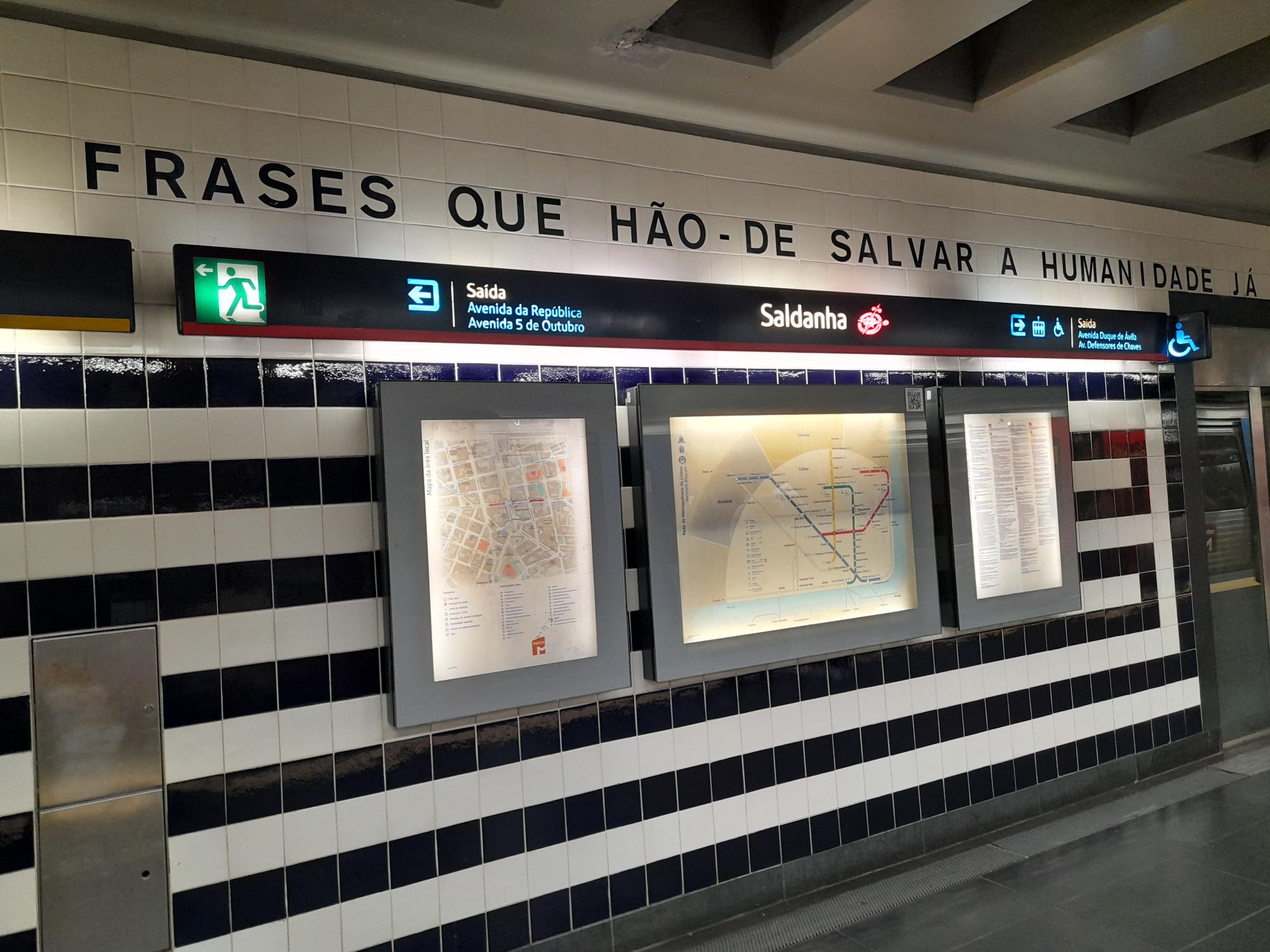
Martim Moniz Station – A Historical and Cultural Landmark
Martim Moniz station is one of the most historically interesting stations in Lisbon's metro network. Located in an area that has witnessed significant moments in the city’s history, this station reflects Lisbon's rich multicultural heritage. The Martim Moniz neighborhood is known for its cultural diversity, home to communities of various origins, including African, Indian, and Asian.
The station, decorated by Guerrero and Costa Pinheiro, features elements that allude to the battle that gave the square its name, honoring Martim Moniz, a legendary figure who is said to have sacrificed his life during the reconquest of Lisbon from the Moors in the 12th century. The walls of the station are adorned with panels that evoke this historical narrative while also celebrating the modernity and cultural diversity of the neighborhood.
For visitors, Martim Moniz station offers not only a connection to the past but also a celebration of contemporary, multicultural, and dynamic Lisbon.
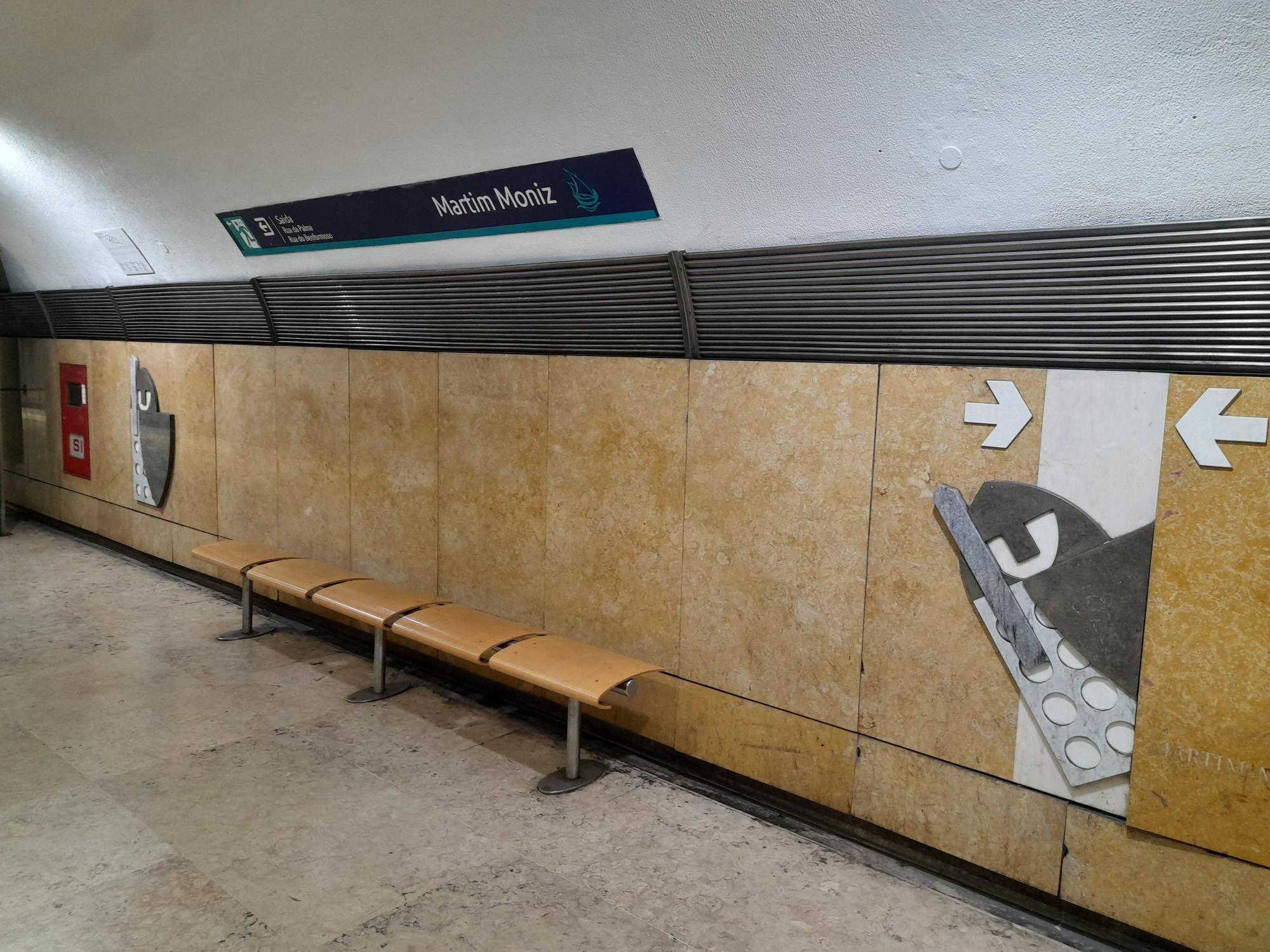
Parque Station – Dedicated to Almada Negreiros
Parque Station, located on the Blue Line, was decorated by Maria Keil, one of the artists most associated with public art in Lisbon’s metro. This station is a tribute to Almada Negreiros, one of Portugal’s foremost modernist figures. The walls are adorned with panels that evoke the ideals of the artist, using abstract geometric shapes in shades of blue and green. The elegant simplicity of the tiles reflects the union of art and function.
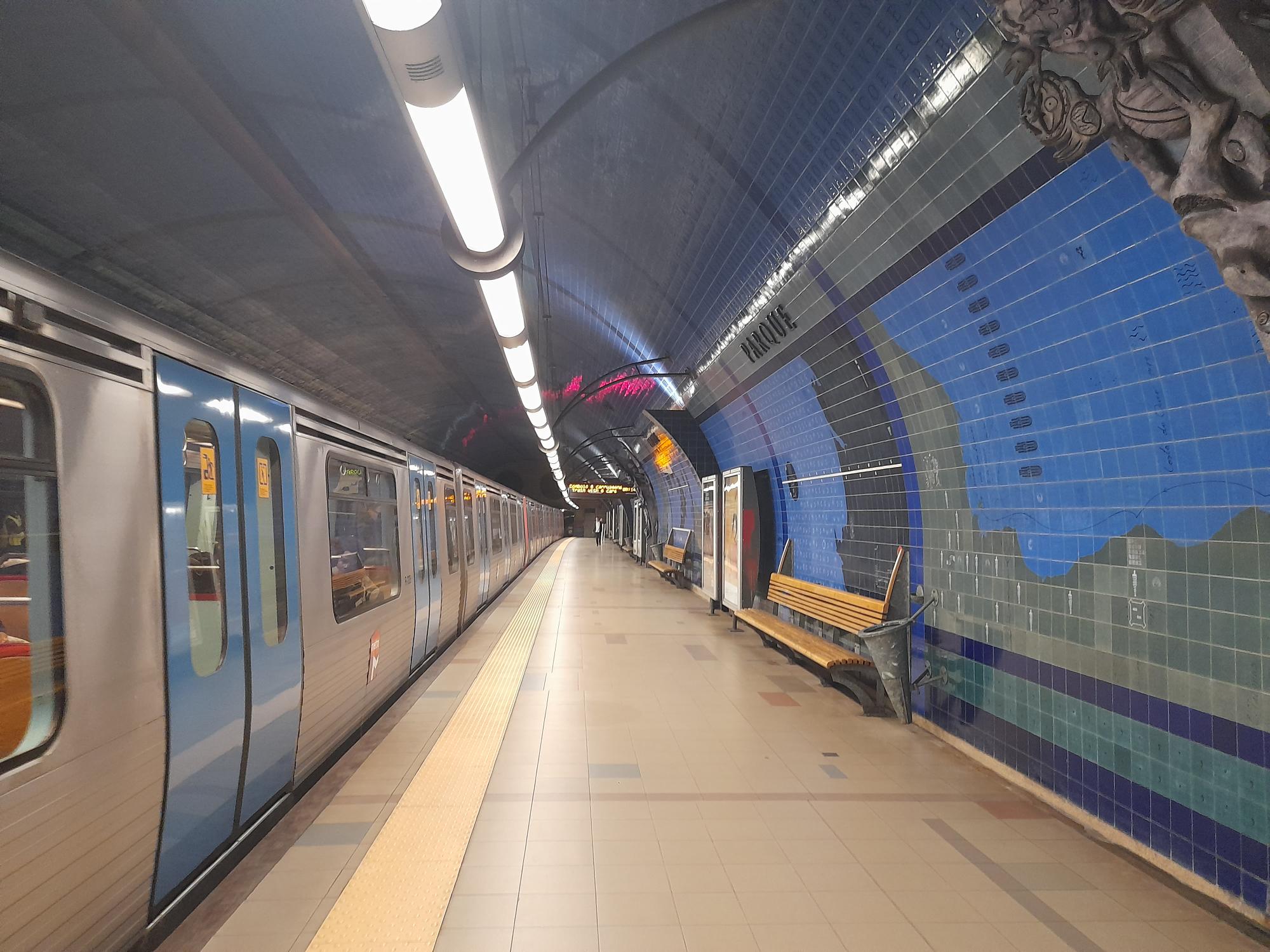
Olaias Station – An International Award-Winning Masterpiece
Olaias Station is often hailed as one of the most beautiful metro stations in the world, having been awarded internationally for its design. Opened in 1998, it was designed by architect Tomás Taveira in collaboration with several artists, including Pedro Cabrita Reis and Graça Pereira Coutinho. The station stands out with its high ceilings, vibrant use of color, and light. The colorful mosaics, geometric structures, and imposing columns create an almost futuristic atmosphere, inviting passengers to contemplate the space.
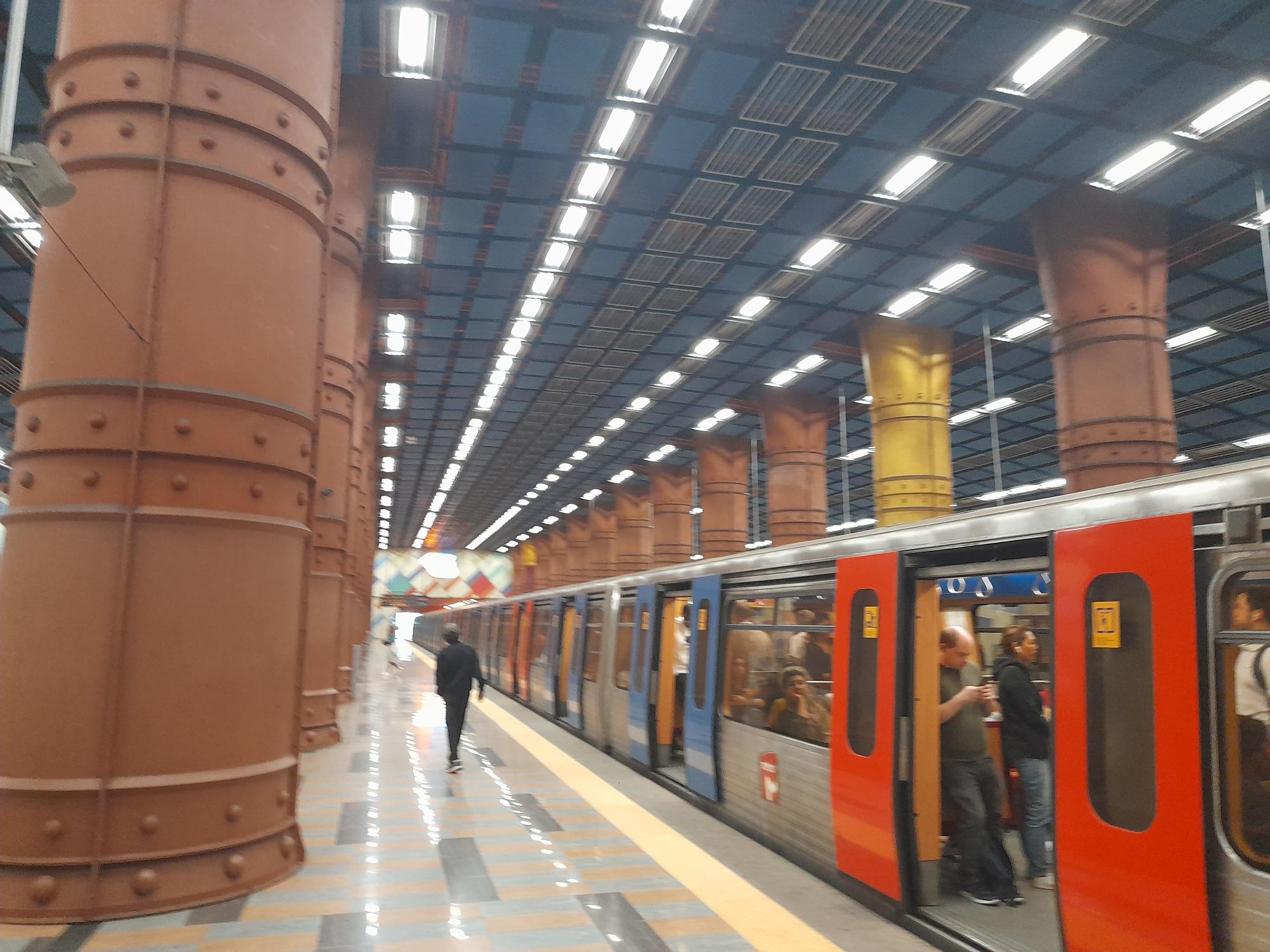
Cais do Sodré Station – A Tribute to the Tagus River
Cais do Sodré Station’s design is deeply connected to the Tagus River. Decorated by Nuno Siqueira, with artistic contributions from António Dacosta, the station's walls feature maritime motifs, inviting travelers to dive into Lisbon’s history as a port city. The shades of blue, white, and yellow evoke the brightness of the riverbanks and the intimate connection between the city and the sea.
A unique detail of the station is the multiple depictions of the White Rabbit from Alice in Wonderland, serving as a clear allegory for the hurried commuters who rush through the station, often without even noticing it. The Rabbit, always racing against time, mirrors the fast-paced rhythm of urban life, where passengers move quickly through the platforms, nearly unaware of this whimsical touch on the walls around them.
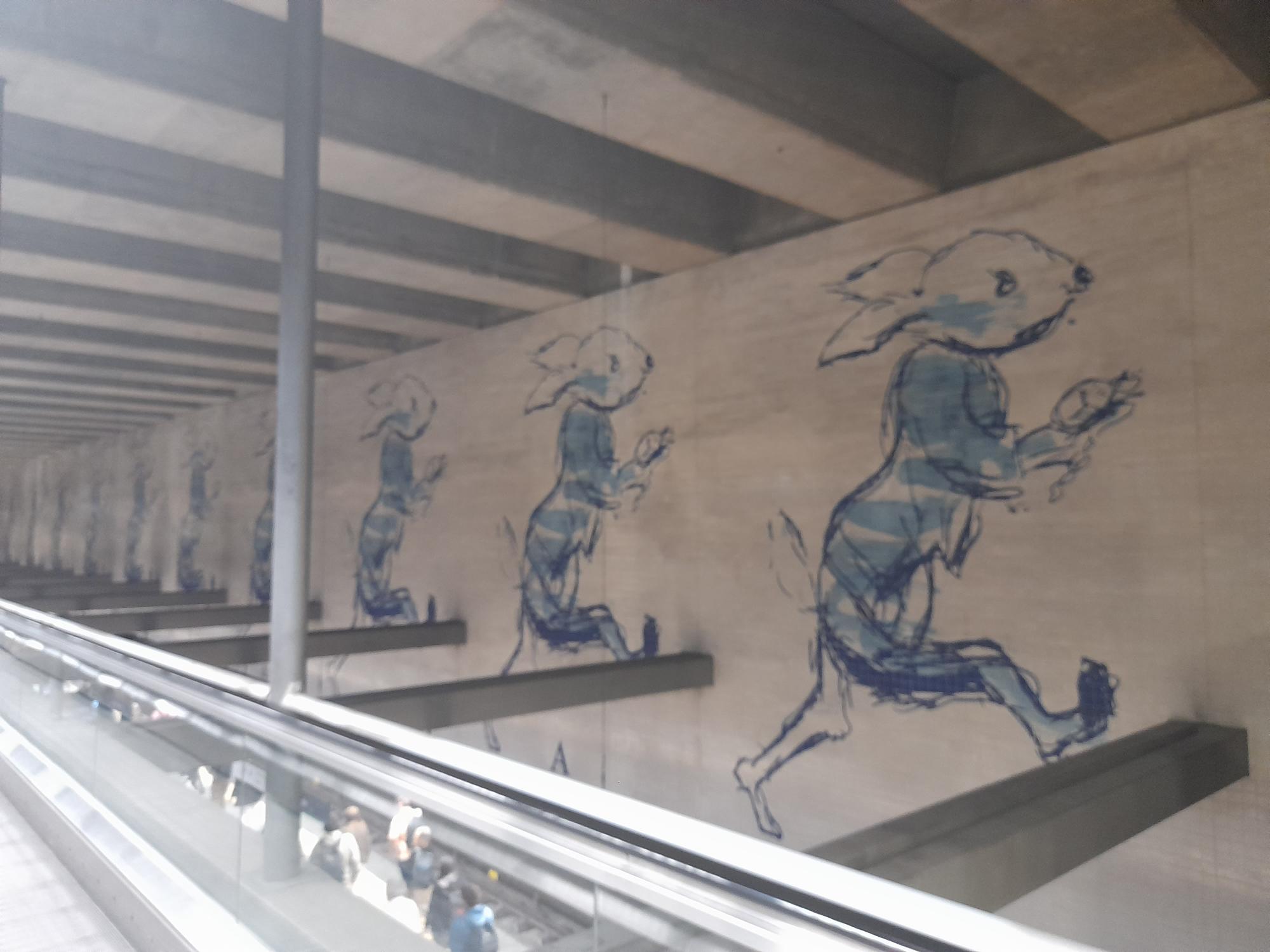
Marquês de Pombal Station – A Symbol of the City’s Renewal
Located in the heart of Lisbon, Marquês de Pombal Station stands out for its historical symbolism. The design was inspired by the 18th-century statesman responsible for rebuilding Lisbon after the 1755 earthquake. Artist João Abel Manta used panels to depict the city's reconstruction, with images of the Marquês and symbolic elements of Renaissance Lisbon. The sober color palette, mainly blues and whites, reflects the seriousness of the theme, making this station a tribute to Lisbon’s rebirth.
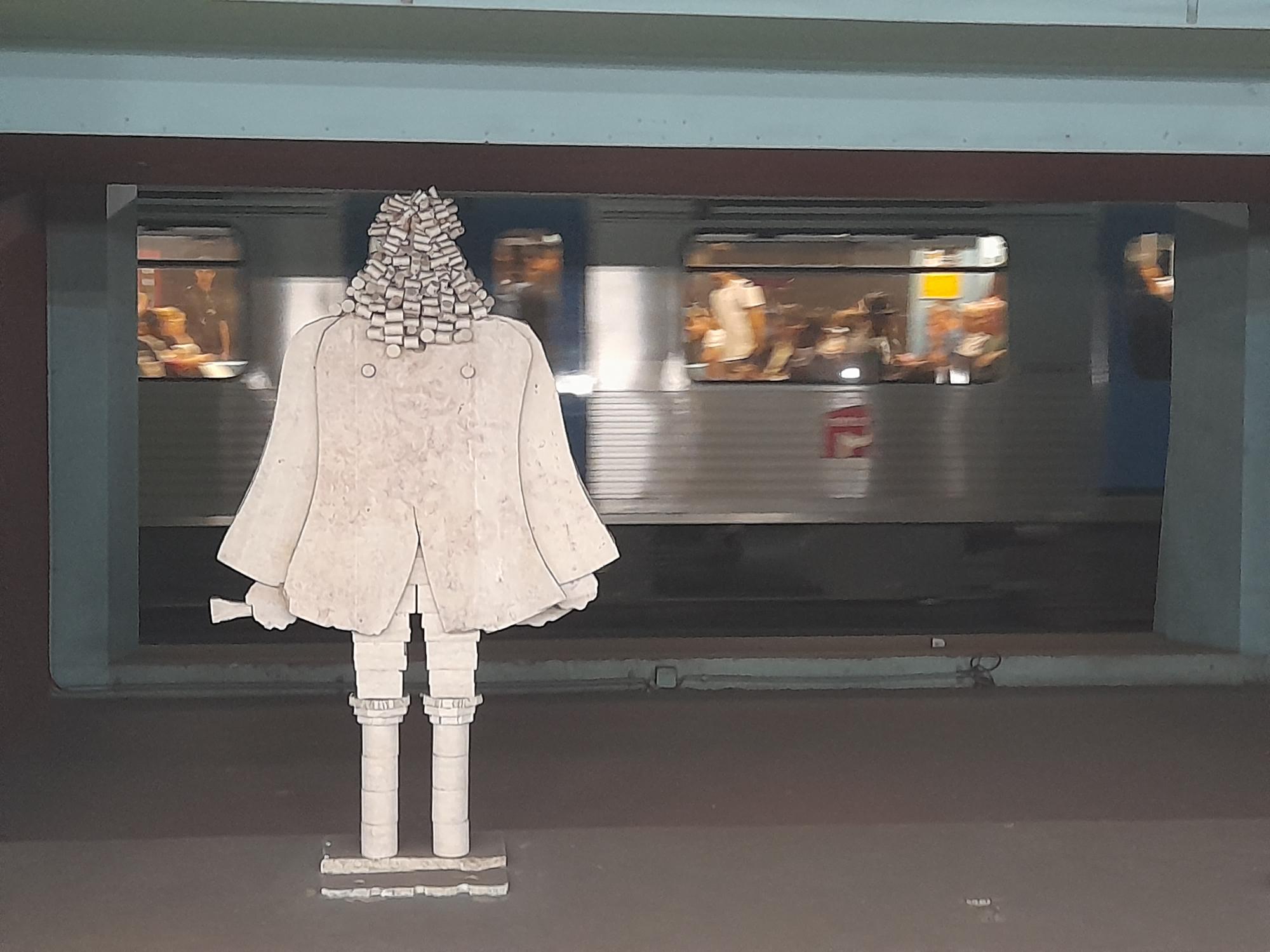
These are just a few of the many stations that transform Lisbon’s metro into an art gallery accessible to all. A metro ride can be much more than just a commute—it’s an opportunity to discover artworks, engage with the city’s history, and appreciate the creativity of some of Portugal’s finest artists. Next time you board the metro, take a moment to look around and be surprised by what these stations have to offer!


